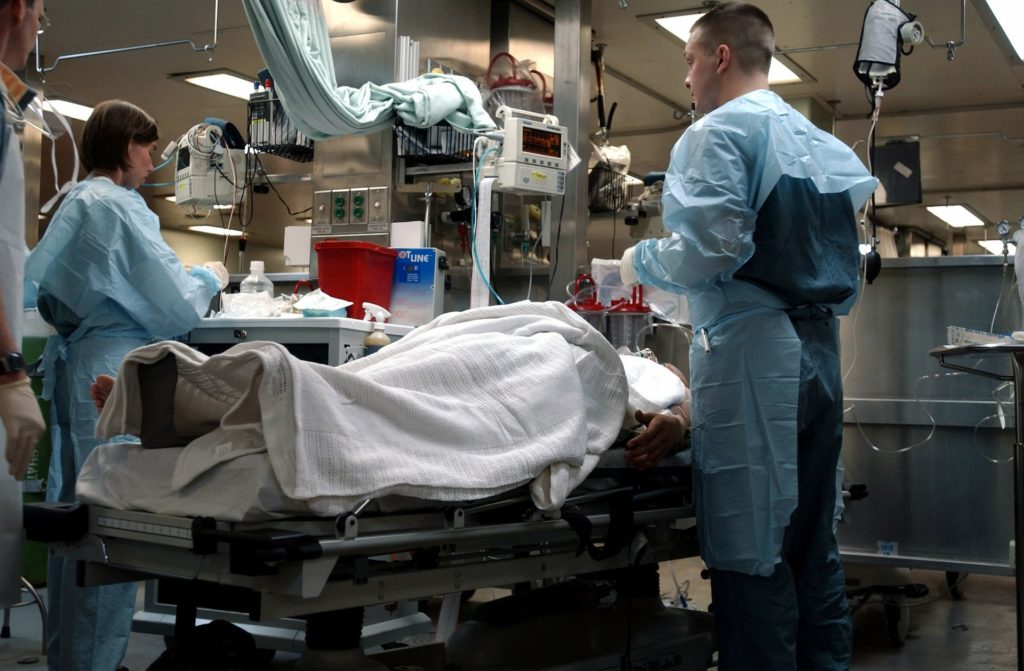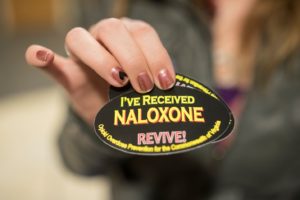
Dr. Mark Gold's Research You Can Use
Recent times have witnessed an increase in patients with nonfatal opioid overdoses. Between 2005 and 2014, emergency department visits in relation to opioids have doubled per capita and opioid-associated inpatients stays escalated by almost two-thirds in the U.S. This has drawn clinical attention toward a better understanding of the associated risks of premature mortality following an overdose.
A U.S. national longitudinal study assessed a population of patients who had undergone nonfatal opioid overdoses to characterize all-cause mortality rates, selected cause-specific mortality rates and standardized mortality rate ratios of adults during the initial year following a nonfatal opioid overdose.
Opioid overdoses and risk of mortality
Almost 68 percent of more than 70,200 drug overdose deaths in 2017 were associated with an opioid. An estimated 27 million people suffered from opioid use disorders in 2016. Even though the majority used illicitly manufactured heroin, an increasing proportion of this population was dependent upon prescription opioids.
Opioids are extremely addictive psychoactive substances that can quickly lead to a substance use disorder distinguished by an irrepressible desire to use opioids, persistent use despite repercussions, raised tolerance and physical withdrawals upon discontinuation of use.
Due to the effect opioids are able to exert on part of brain which regulates breathing, high doses can result in respiratory irregularities, shallow pulse, low blood pressure, depressed breathing and death. The “opioid overdose triad”, a combination of three symptoms, can help identify an opioid overdose. These are:
- Pinpoint pupils
- Unconsciousness
- Respiratory depression
Combining opioids with other depressants such as alcohol and sedative medication further increases the risk of respiratory depression and death. This is found to be a common occurrence in fatal drug overdoses.
 Dependent use of opioids increases the risk of premature mortality. A meta-analysis, conducted at the National Drug and Alcohol Research Centre in Australia, indicated a 15 times higher annual risk of death in regular and dependent opioid users in treatment than compared to their peers.
Dependent use of opioids increases the risk of premature mortality. A meta-analysis, conducted at the National Drug and Alcohol Research Centre in Australia, indicated a 15 times higher annual risk of death in regular and dependent opioid users in treatment than compared to their peers.
Present study
Risks of dying following a nonfatal opioid overdose still remain problematic, inadequately understood and studied. To fulfill this gap of knowledge in further comprehending the opioid overdose epidemic in U.S., the present study examined the causes of death in a large cohort of nonelderly adults, enrolled in the Medicaid program, during their first year following from a nonfatal opioid overdose.
The data set, collected from the national Medicaid Analytic Extract (MAX) data from the U.S. Centers for Medicare and Medicaid Services, comprised of 45 states and covered a duration of six years from 2001 to 2007. Dates and cause of death information were derived from the National Death Index, which provides a complete account of state-recorded deaths in the U.S.
Additionally, to all-cause mortality, the analysis targeted selected immediate causes of death, which included external cause such as suicide, homicide and unintentional injuries. Furthermore, were included substance abuse-associated causes and infectious diseases including hepatitis and HIV, diseases of the circulatory system, respiratory diseases alongside influenza, pneumonia and chronic respiratory diseases, illness associated to the digestive system, cirrhosis and alcohol liver disease, and cancers.
Based upon the selected population for this study, the number of observed deaths, person-years of follow-up, mortality rates per 10,000 person-years, expected deaths and standardized mortality rate ratios were determined overall and stratified by demographic characteristics. The primary cohort included 76,325 adults and 66,736 person-years of follow-up.
All-cause mortality
Within the first year, 5194 were recorded. The overall all-cause mortality rate for adults following an opioid overdose was 778.3 per 10,000 person-years, indicating a death rate 20 times higher than community controls matched for age, sex and race/ethnicity. The all-cause SMR was observed to be particularly high for young adults between the ages of 18 and 34 years and were generally higher for women than men.
Selected causes of mortality
 Approximately, one-fourth of the deaths were a result of diseases associated with substance use, followed numerically by diseases of the circulatory system (13.2 percent) and cancer (10.3 percent).
Approximately, one-fourth of the deaths were a result of diseases associated with substance use, followed numerically by diseases of the circulatory system (13.2 percent) and cancer (10.3 percent).
Expectedly, the SMR for drug-use associated deaths exceeded all other causes of death. Other causes of death with specifically higher SMRs included HIV, chronic respiratory diseases, viral hepatitis and suicide.
Compared with the demographically matched general population, standardized mortality rate ratios were 24.2 for all-cause mortality, 132.1 for drug use–associated diseases, 45.9 for HIV, 41.1 for chronic respiratory diseases, 30.9 for viral hepatitis, and also of great concern, 25.9 for suicide.
Medical comorbidities and risk of mortality
Most of the patients in the selected population, that is around 80 percent, were diagnosed with one or more medical conditions in the 180 days prior to their initial opioid overdose. The all-cause mortality rate for participants diagnosed with comorbidities was 871.2 per 10,000 person-years, which is more than twice as high as for patients with no co-existing morbidities. For patients with Elixhauser Comorbidity Index score of at least 1 had significantly higher SMRs in relation to several causes of death including associated diseases and suicide.
Why is this important?
This study has helped establish that adults who have survived an opioid overdose are not out of the woods, but are at a much higher risk of dying in the following year, not just from drug use-associated causes, but also from a large array of general medical diseases and suicide. Such a marked excess of deaths only further highlights the cruciality of coordinating substance use, mental health and medical care of this patient population.
An increased understanding of these risks could inform efforts to provide preventive and potentially lifesaving medical care after nonfatal opioid overdose and to better integrate general medical care with the treatment of opioid use disorders.
References:
1. https://jamanetwork.com/journals/jamapsychiatry/article-abstract/2685326
2. https://www.who.int/substance_abuse/information-sheet/en/
3. https://www.ncbi.nlm.nih.gov/pubmed/21054613
About the Author:
 Mark S. Gold, M.D. served as Professor, the Donald Dizney Eminent Scholar, Distinguished Professor and Chair of Psychiatry from 1990-2014. Dr. Gold was the first Faculty from the College of Medicine to be selected as a University-wide Distinguished Alumni Professor and served as the 17th University of Florida’s Distinguished Alumni Professor.
Mark S. Gold, M.D. served as Professor, the Donald Dizney Eminent Scholar, Distinguished Professor and Chair of Psychiatry from 1990-2014. Dr. Gold was the first Faculty from the College of Medicine to be selected as a University-wide Distinguished Alumni Professor and served as the 17th University of Florida’s Distinguished Alumni Professor.
Learn more about Mark S. Gold, MD
About the Transcript Editor:
 A journalist and social media savvy content writer with extensive research, print and on-air interview skills, Sana Ahmed has previously worked as staff writer for a renowned rehabilitation institute, a content writer for a marketing agency, an editor for a business magazine and been an on-air news broadcaster.
A journalist and social media savvy content writer with extensive research, print and on-air interview skills, Sana Ahmed has previously worked as staff writer for a renowned rehabilitation institute, a content writer for a marketing agency, an editor for a business magazine and been an on-air news broadcaster.
Sana graduated with a Bachelors in Economics and Management from London School of Economics and began a career of research and writing right after. Her recent work has largely been focused upon mental health and addiction recovery.
The opinions and views of our guest contributors are shared to provide a broad perspective of addictions. These are not necessarily the views of Addiction Hope, but an effort to offer a discussion of various issues by different concerned individuals.
We at Addiction Hope understand that addictions result from multiple physical, emotional, environmental and genetic factors. If you or a loved one are suffering from an addiction, please know that there is hope for you, and seek immediate professional help.
Published on January 22, 2019
Reviewed by Jacquelyn Ekern, MS, LPC on January 22, 2019
Published on AddictionHope.com
